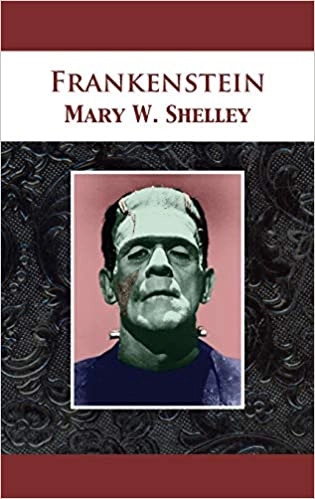Reading Level
What is the reading level of Frankenstein; Or, The Modern Prometheus ?
Analysing the books in the series, we estimate that the reading level of Frankenstein; Or, The Modern Prometheus is 12th and 13th grade.
Expert Readability Tests for
Frankenstein; Or, The Modern Prometheus
| Readability Test | Reading Level |
|---|---|
| Flesch Kincaid Scale | Grade 10 |
| SMOG Index | Grade 12 |
| Coleman Liau Index | Grade 9 |
| Dale Chall Readability Score | Grade 7 |
Reading Time
5 hrs 20 mins
How long to read Frankenstein; Or, The Modern Prometheus (Legend Classics)?
The estimated word count of Frankenstein; Or, The Modern Prometheus (Legend Classics) is 79,825 words.
A person reading at the average speed of 250 words/min, will finish the book in 5 hrs 20 mins. At a slower speed of 150 words/min, they will finish it in 8 hrs 53 mins. At a faster speed of 450 words/min, they will finish it in 2 hrs 58 mins.
| Frankenstein; Or, The Modern Prometheus (Legend Classics) - 79,825 words | ||
|---|---|---|
| Reading Speed | Time to Read | |
| Slow | 150 words/min | 8 hrs 53 mins |
| Average | 250 words/min | 5 hrs 20 mins |
| Fast | 450 words/min | 2 hrs 58 mins |
- Authors
-
Mary Wollstonecraft Shelley
More about Frankenstein; Or, The Modern Prometheus
79,825 words
Word Count
for Frankenstein; Or, The Modern Prometheus (Legend Classics)
132 pages
Pages
8 hours and 35 minutes
Audiobook length
Description
Frankenstein; or, The Modern Prometheus is a novel written by English author Mary Shelley (1797–1851) that tells the story of Victor Frankenstein, a young scientist who creates a hideous, sapient creature in an unorthodox scientific experiment. Shelley started writing the story when she was 18, and the first edition of the novel was published anonymously in London on 1 January 1818, when she was 20. Her name first appeared on the second edition, published in 1823.Shelley travelled through Europe in 1814, journeying along the river Rhine in Germany with a stop in Gernsheim, which is 17 kilometres (11 mi) away from Frankenstein Castle, where, two centuries before, an alchemist was engaged in experiments. Later, she travelled in the region of Geneva (Switzerland)—where much of the story takes place—and the topic of galvanism and occult ideas were themes of conversation among her companions, particularly her lover and future husband, Percy Shelley. Mary, Percy and Lord Byron decided to have a competition to see who could write the best horror story. After thinking for days, Shelley dreamt about a scientist who created life and was horrified by what he had made; her dream later evolved into the novel's story.Frankenstein is infused with elements of the Gothic novel and the Romantic movement. At the same time, it is an early example of science fiction. Brian Aldiss has argued that it should be considered the first true science fiction story because, in contrast to previous stories with fantastical elements resembling those of later science fiction, the central character "makes a deliberate decision" and "turns to modern experiments in the laboratory" to achieve fantastic results. It has had a considerable influence in literature and popular culture and spawned a complete genre of horror stories, films and plays.Since the novel's publication, the name "Frankenstein" has often been used to refer to the monster itself. This usage is considered erroneous, but some commentators regard it as well-established and acceptable. In the novel, Frankenstein's creation is identified by words such as "creature", "monster", "daemon", "wretch", "abortion", "fiend" and "it". Speaking to Victor Frankenstein, the monster says "I ought to be thy Adam, but I am rather the fallen angel" (which ties to Lucifer in Paradise Lost, which the monster reads, and which relates to the disobedience of Prometheus in the book's subtitle). Source: Wikipedia
